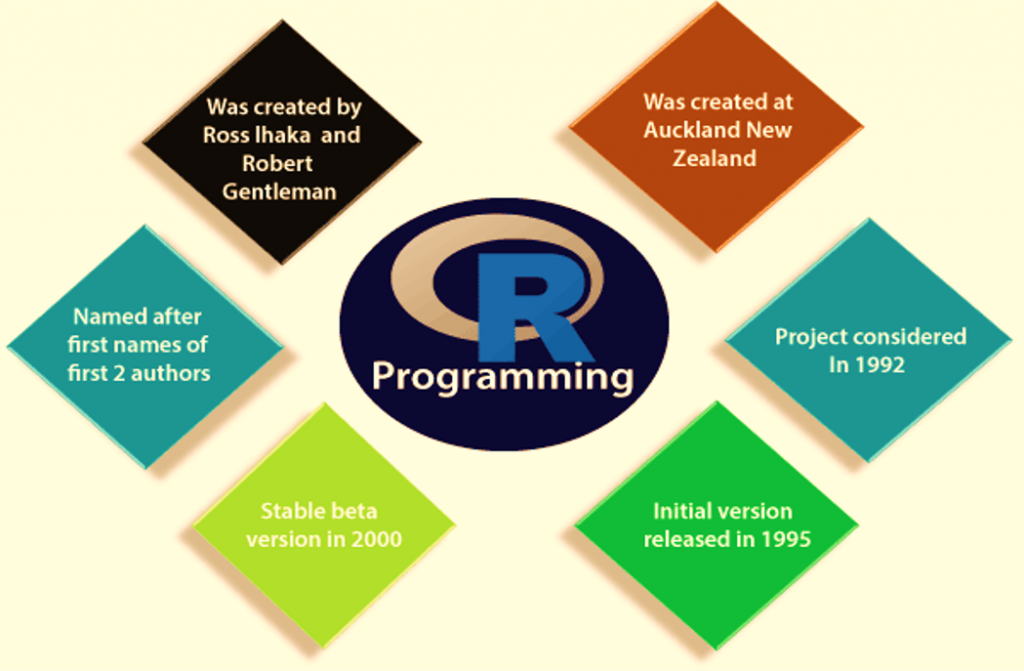R is a programming language that is used for statistical computing and graphics. R programming is similar to S programming. It is considered a different style of S language implementation. S language code runs unaltered under R language but there are also some differences.
R programming provides statistical linear and non-linear modeling, time series forecasting, classification, clustering, and many classical statistical tests. It also provides many graphical techniques which are very extensible. R language provides an open-source route for research in statistical methodology. The quality of producing well-designed publication plots including mathematical formulas and symbols where required is the main strength of R language. R language allows us to do modular programming using functions and also allows for branching and looping.
R is available as open-source software under the terms of GNU General Public License. R is the most important tool in the current time which is used by statisticians, researchers, data analysts, and marketers. currently, R programming and Python are the most popular languages for data science.
History of R language

The R language release date, version, and description are shown in the following table:
| Version | Release Date | Description |
| 0.49 | 1997-04-23 | The First R source was released |
| 0.60 | 1997-12-05 | R gets the GNU license officially |
| 0.65.1 | 1999-10-07 | install.package and update.packages included |
| 1.0 | 2000-02-29 | Release of the first production version |
| 1.4 | 2001-12-19 | The first version for Mac OS is made available. |
| 2.1 | 2005-04-18 | UTF-8 encoding, localization, and internationalization support was added |
| 2.11 | 2010-04-22 | Windows 64-bit support |
| 2.13 | 2011-04-14 | Code to byte conversion function was added |
| 2.14 | 2011-10-31 | Addition of new packages. |
| 2.15 | 2012-03-30 | Long vectors improved serialization speed |
| 3.0 | 2013-04-03 | Larger numeric values support 64-bit systems |
| 3.4 | 2017-04-21 | By default just-in-time compilation (JIT) is enabled |
| 3.5 | 2018-04-23 | Addition of compact internal representation of integer sequences, serialization format |
Features of R programming language
R language has many unique features that make it powerful. Following are some important features of the R language:
- It is open-source highly extensible and powerful software.
- It is well developed simple and effective programming language.
- It is an interpreted language.
- It provides high range of graphic techniques.
- It is used for data analysis.
- It has a concept of user-defined input/output facilities, conditioning, and looping facilities.
- It provides us many types of calculations on arrays, lists, and vectors.
- It has an incorporated set of tools that are used for data analysis.
- It contains a suite of operators.
- It provides effective storage and data handling facilities.
Why use R programming language?
- It is open-source and free
- It has large support of the community
- It provides the facility to work on different platforms like Linux, Mac, and Windows
- It provides a wide range of statistical techniques
- It has a variety of graphs like histograms, pie charts, scatter plots, etc.
- It is used for data analysis and visualization, machine learning, and data science
- It has a variety of packages to solve different problems.
Applications of R programming language
Some popular real-time applications of the R language are as follows:
- Real climate
- NDAA
- FDA
- Sunlight Foundation
- XBOX ONE
- ANZ
Advantages of R programming language
- It is open source language
- It is platform independent
- It provides data wrangling features
- It supports quality plotting and graphing
- It is continuously growing programming language
Disadvantages of R programming language
- It has weak origin
- It is not ideal when dealing with big data
- It lacks basic security
- It is slower than other programming languages
